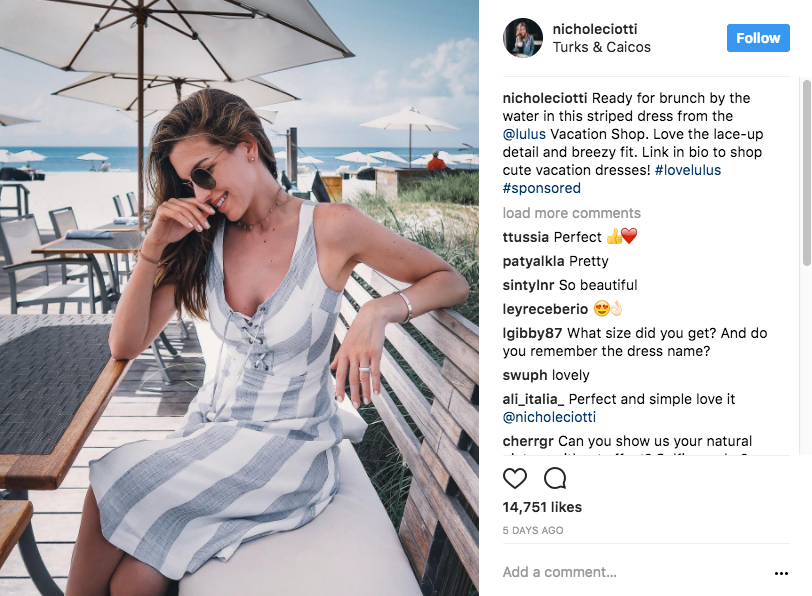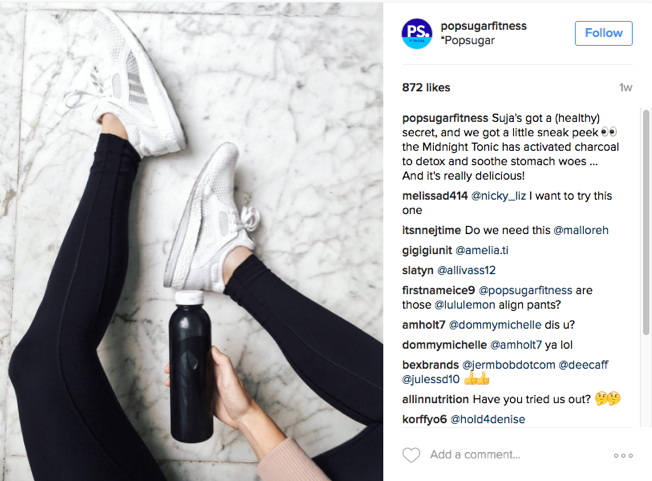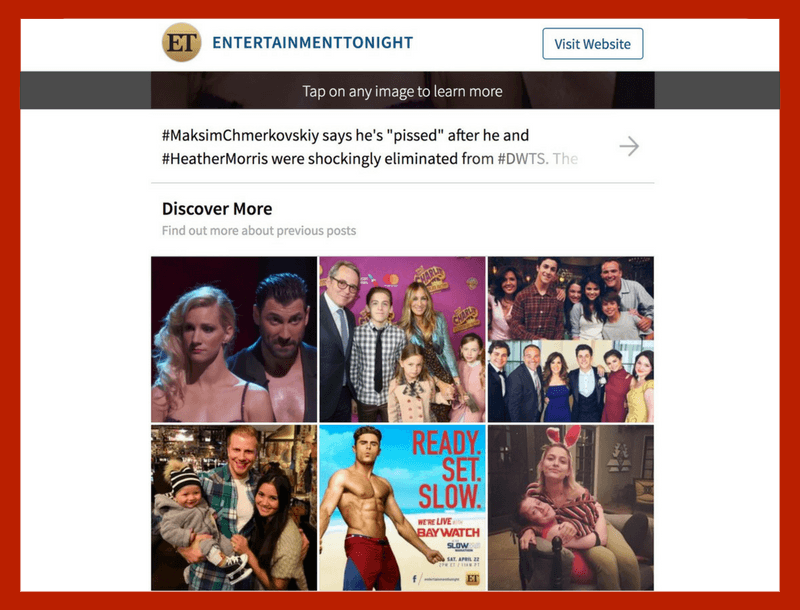Brand Development, Web Design, and Google Analytics Specialists
Experienced in SEM, SEO, Social Media, and Traditional Media
The Top 11 Benefits of Guest Blogging

* Original article *
Guest blogging is one of the best online marketing strategies you can invest in.
If you want to spread your brand’s message and win the trust of your target audience, start contributing content to other blogs related to your market or niche.
Not convinced you should work hard writing content for someone else’s site?
You should know that guest blogging offers many major benefits – both for your company and you, personally.
Here are the top 11 benefits of guest blogging.
1. Instant Exposure to Targeted Traffic
Regardless if you whether you get a link to your site, contributing to other blogs should pique your audience’s interest. If you manage to write a top-quality post, expect traffic to start flowing to your site once it goes live.
Traffic is the lifeblood of any online business or blog. Something as simple as a guest post can potentially translate into sales if you do it the right way.
Optimize your website’s landing pages, CTAs, and other elements to boost your chances at conversion.
2. Expand Your Personal Network
There was a time when connecting with influencers was extremely difficult. But with guest blogging, the process is now simple.
For example, some websites that accept guest posts foster a community of contributors engaged in related niches. In some cases, you’ll get the chance to take part in an email thread where contributors brainstorm potential topics. You can also collaborate with others for co-authored posts.
Regardless of what the community’s structure in a particular site is, you can always leverage your authorship. Seek partnership opportunities with influencers – from content cross-promotion to expert interviews.
All you need to do is be active in the community. Leave comments, share other posts, or cold-email your prospects. If possible, you can even invite influencers as contributors to your own blog.
3. Stimulate Social Media Shares
Generating social media shares is one way to exponentially extend your online reach. The more shares your branded content gets, the more shareworthy it’ll be in the eyes of your audience.
If you’re submitting a guest post to a blog with plenty of social media activity, then shares should come naturally once your content gets published.
To get the ball rolling faster, consider embedding highly shareable content in your guest post. Infographics, for example, can help you get 3x more engagement in social media than any other type of content.
4. Grow Your Social Media Following
Guest blogging not only increases the amount of social media shares to your content, it can also boost your follower count and accelerate your lead generation efforts.
By contributing to an authoritative blog, you are essentially getting them to vouch for your brand. This makes you look good in the eyes of their followers.
In most guest blogging arrangements, you also get to customize your contributor profile. Here you can include links to your social media accounts.
All these benefits will make it easier to win your target audience’s trust and turn them into active social media followers. Remember to reward them by posting regular updates and sharing useful information that aligns with their interests.
5. Improve Your Online Authority
Modern online marketing is all about authority. Even with the best content in the world, it’ll be difficult to convert your audience into loyal subscribers or paying customers if they don’t trust your brand.
By contributing to other authoritative blogs, you get the chance to prove your credibility as an information source. It will make your target audience realize that you’re someone who’s recognized by trustworthy brands. And as a result, they’ll be more receptive to any value proposition you may present in your own site.
6. Fortify Your Backlink Profile
Most blogs that accept guest posts allow their contributors to leave at least one link to their own site. After all, most of them don’t offer any monetary compensation for your hard work. A brief brand mention or keyword-optimized link is the least they could do to reward your efforts.
Still, even a single backlink from an authoritative blog will greatly benefit your SEO. They make your content more discoverable and indexable to search engines like Google. As much as possible, try to target websites in your own niche to build relevancy.
7. Grow Brand Awareness
Guest blogging is a great way to establish your authority in your niche.
As much as possible, try to share practical tips that aren’t already found elsewhere.
Leverage the opportunity to let them know what your company does and how it would solve problems.
Also, be sure to instill your brand’s voice into every single post you submit. This will make your personal brand more recognizable regardless of where you submit guest posts.
Some popular bloggers, such as Larry Kim, use a conversational and humorous approach to engage readers. They also avoid writing fluff while keeping sentences short and easy to read.
8. Generate Qualified Leads
One of the fundamental steps to a successful guest blogging strategy is picking the right websites.
In addition to niche relevancy, you also need to look for sites that already have a steady stream of traffic. This will help you connect with people who are already interested in what you offer as a business.
Always emphasize an actionable step when developing the page that you’re bringing traffic to. It should be related to the guest post you’ve submitted to the other blog. Otherwise, your link is nothing more than a disruption in your audience’s journey — a waste of time for them and a lost lead for you.
9. Shorten the Sales Cycle
The sales funnel has always been a challenge for content marketers. By distributing content through popular blogs, you are immediately building your target audience’s familiarity with your brand. Thus, you are shortening the sales cycle for your products and services.
Think of it this way: rather than waiting for potential leads to come to your site, you can introduce your brand’s value propositions in your guest posts.
You just need to be smart when picking or pitching topic ideas for your guest posts.
10. Get Useful Feedback from the Community
As a guest blogger, another advantage of being active in the community is that you get to receive insightful feedback from other contributors.
When you talk about strategies, for example, other experts may tune in to share their own ideas through the comments section. As a result, you can further develop or refine your strategy with their suggestions in mind.
To invite contributors to comment, try adding a call-to-action in the conclusion paragraph. You can refer to the end of this post to see how it works.
11. Sharpen Your Content Marketing Skills
Guest blogging requires every area of content marketing to be successful. It requires you to do content research, adopt the right writing voice for a particular audience, perform influencer outreach, and so on.
Remember, the best way to learn content marketing tactics is to deploy them yourself. You can’t just read about them, follow everything to the letter, and hope for the best.
By launching your own guest blogging campaign, you’re positioning yourself for growth in every facet of content marketing.
Conclusion
Guest blogging is, without a doubt, a crucial step for online marketing success. Once you grasp its benefits, give it a shot and see if you can make it work for your brand.
8 Old School Marketing Tactics That Work for Social Media

Link to Original article
Okay, so it’s hard to imagine Don Draper meeting with Bethlehem Steel execs in Sterling Cooper’s top floor Madison Avenue boardroom, telling them to get on Snapchat. But even though we no longer think of typewriters as “technology” or describe TVs as “radios with pictures,” there are plenty of solid ideas from the Mad Men-era of advertising that translate to social media.
So let’s throw it back to a time before #ThrowbackThursday existed for some good old-fashioned advice from the old-school pros.
1. Doing smart, thorough research
In the premier episode of Mad Men, Don Draper trashes an in-house researcher’s report on the psychology of cigarette users and decides to wing a presentation for Lucky Strike executives instead. While Draper pulls it off, not all ad executives were so cavalier.
“Advertising people who ignore research are as dangerous as generals who ignore decodes of enemy signals,” said David Ogilvy, the founder of Ogilvy & Mather who was credited as the “Original Mad Man” and the “Father of Advertising.”
Ogilvy’s experience at Gallup’s Audience Research Institute taught him to value data way before Big Data became a thing. His knack for research-supported copywriting is best exemplified in his headline for a 1960s Rolls-Royce ad, widely considered one of the best auto taglines of all time.

Nowadays, social media marketers looking to emulate the OG Mad Man’s advice should support their strategies with analytics platforms and research-backed ideas.
2. Learning the rules, then breaking them
There are more game changers in the Advertising Hall of Fame than there are rule followers.
“Rules are what the artist breaks; the memorable never emerged from a formula,” said ad exec William Bernbach, creative director who co-founded the agency Doyle Dane Bernbach in 1949.
Bernbach’s “Think Small” campaign for Volkswagen in the 1960s threw out the rulebook for traditional print ads. To sell the compact Beetle to muscle car-crazed Americans, Bernbach’s team departed from convention by picturing a very tiny car on a page filled mainly with blank space. The small idea translated to a big boost in sales and brand loyalty.

Rule breaking may seem trickier on social media, but it’s still possible. BETC’s “Like My Addiction” campaign caught more than 100K Instagrammers by surprise with the reveal that the Parisian “it girl” Louise Delage was a fake account designed to portray a textbook alcoholic. Created for French organization Addict Aide, the initiative demonstrated that it can be difficult to spot signs of youth alcoholism.
3. Avoiding sleazy bait-and-switch tactics
Known as the world’s first female copywriter and the author of the first ad to use sex appeal, Helen Lansdowne Resor was keeping advertising real long before the ad men of the swinging 60s and 70s came onto the scene.
Her conviction that “copy must be believable,” can be found throughout her entire body of work, including her early copywriting for Woodbury Soap Company in 1910. Smooth taglines like “A skin you love to touch,” and “Your skin is what you make it” remained in circulation for decades.

Social media marketers can take Lansdowne Resor’s point in two ways. First, copy should not be too over-the-top or exaggerated, especially since teens are skeptical when it comes to trusting brands. Avoid empty platitudes or superlatives that may arouse doubt.
Second, don’t lie. Millennials are 43 percent more likely than other generations to call a brand out on social media. You dig?
4. Getting right to the heart of things
It’s hard to imagine that the “I ❤ New York” slogan was invented in a pre-emoji world. Sparse in word count and minimal in design, the logo is emblematic of co-creator Jane Maas’ direct approach to advertising.

In How to Advertise, a book Maas co-wrote with colleague Kenneth Roman, she explains, “Commercial attention does not build. Your audience can only become less interested, never more. The level you reach in the first five seconds is the highest you will get, so don’t save your punches.”
The advice is eerily applicable to video marketing in the current digital media ecosystem, where attention spans are running shorter than ever, especially among today’s teenyboppers. You must catch your audience’s attention immediately, or risk losing them entirely.
Check out The Four Key Ingredients of a Perfect Social Video for more pointers on creating punchy video campaigns.
5. Using the right imagery
Inspired by a sea lion performance at a zoo, John Gilroy developed the “My Goodness, My Guinness” for the Irish beer company in the late 1920s. The series depicts a flabbergasted zookeeper prying his beer from the arms of a polar bear, the pouch of a kangaroo and the jaws of a crocodile. And, of course, a toucan.
The humorous misadventures of the zookeeper pop with vibrant colors set against an often-white backdrop. Keen observers point out that it was Gilroy’s uniform use of typography that helped solidify Guinness’ brand image. The popularity of the artwork and consistency of style made it one of the longest advertising campaigns in history.
Using images is a great way to up your social media game, especially since visuals can aid in information retention. Marketers should ensure that photos complement branding and style guidelines. And where possible, add the logo and logotype to the image. Consistency in style is a bonus, but it will help your followers recognize your brand on any platform.
If you don’t have access to artists, photographers, or graphic designers, check out these resources for creating quick and beautiful images for social media.
6. Ditching the one-size-fits-all approach
As the first black man in Chicago advertising, Tom Burrell quickly saw that advertising boardrooms had a diversity problem. Too often, ad execs would create content for white audiences and expect it to have broad appeal. Or, they’d create a commercial for white actors and film a second version with black actors.
After witnessing a number of tone-deaf gaffs and insensitive blunders, Burrell found himself repeating to his colleagues, “Black people are not dark-skinned white people.”
By advocating for tailoring messages for specific communities, he was one of the first to pioneer ethnic micro targeting in advertising. He founded his own agency, Burrell Communications, in 1971 and quickly became the authority on crafting messages for African-American audiences.
In work he did for McDonalds, Burrell reasoned that the company’s slogan “You deserve a break today” sounded too occasional for many African Americans who had a more regular experience with the fast food chain. Instead, he came up with lines like “Sure is good to have around” and “Get down with something good at McDonald’s.”

With Gen Zers forming the most ethnically diverse population in U.S. history, Burrell’s approach is one that social media marketers should put in practice.
Here’s how to find your audience on social media.
7. Knowing that context matters
In 1970, advertisers working for Schaefer beer created a print ad to commemorate the company’s tradition of producing America’s oldest lager. The minimal layout was designed to place emphasis on the year Schaefer’s lager was introduced, with a 10-word tagline reading: “1842. It was a very good year for beer drinkers.”
The two-page ad was placed in a number of popular publications such as LIFE Magazine. But its placement in Ebony Magazine, a publication with a predominantly African American readership, drew criticism.
As Tom Burrell points out in an interview with NPR Planet Money, the year 1842 in the United States was a year many black people were enslaved. “It just screamed insensitivity,” he says. “It was a horrible year for us.”

Getting context wrong can make a brand appear ignorant at best. At worst, it can cause lasting damage to a brand’s image.
Getting context right, on the other hand, can have a positive effect. Wells Fargo adapted its television commercial so that would be optimized for Facebook, where viewers prefer shorter content and may watch videos without sound. To promote the launch of Friends and prove the show’s relevance, Netflix’s Pre-Roll campaign shows viewers a clip related to the YouTube video they’re about to watch.
Social media marketers should shift from cross-posting to cross-promoting, with content tailored to suit each platform.
8. Engaging the audience in a conversation
In the 1950s, American advertising executive Shirley Polykoff’s personal approach to copywriting convinced women across the United States to colour their hair. By posing the question “Does she… or doesn’t she?” in Clairol hair-dye commercials, she reassured women that a hair colouring—then a new fad—could look natural.
“Copy is a direct conversation with the consumer,” she said. Her lingo was so effective that it’s now part of the vernacular: “So natural only her hairdresser knows for sure” and “Is it true blondes have more fun?” Who knows, maybe if she’d worked on a campaign for Rogaine we’d still be using the phrase Chrome Dome.

Besides being concise and memorable, Polykoff does something important in her copy that all modern social media marketers should take note of—she asks a question. Posing questions to your audience is a great way to get followers engaged and increase the visibility of your campaigns, such as Airbnb’s #TripsOnAirbnb campaign.
To get the conversation going on social media, Airbnb asked followers to describe their perfect vacation in three emojis. Not only did the prompt generate hundreds of responses, but Airbnb kept the conversation going by responding to each submission with Airbnb Experience suggestions. Remember, if you want to start a convo, follow-through is key.
More brands have been exploring the opportunities to engage via direct messaging, too. To jumpstart conversations between brands and users, Facebook just introduced Click-to-Messenger ads.
8 Productivity Quotes from Top Entrepreneurs to Fuel Your Work Day

As business owners big and small our time is precious, in fact it may be our most valuable asset. When we’re being pulled between internal or clients meetings, deadlines, or a never ending unread inbox our productivity decreases as a result. Making it even harder to find a moment to recenter and focus the mind on what’s actually important.
However, finding moments to gain clarity and foster creativity are essential to long term success (and let’s be honest, sanity)!
Thankfully there are those that have gone before us and found ways to boost productivity in their daily lives and businesses. Here’s how they’ve done it:
1. “Have a clear system for to-dos: whether it’s ‘Getting Things Done’ or the ‘Checklist Manifesto,’ just have a system and stick to it. I have a very specific method I use in Slack and in email that works for me, and knowing I have that system keeps me from feeling overwhelmed even when I’m behind or the to-dos pile up.” —April Underwood, Vice President of Product, Slack
2. “The key for me is you have to understand how your brain works and when you are most productive. For me, I’m most productive and creative in the morning through early afternoon, so I’ve gotten rid of lunch meetings to keep my productive time going as long as I can. I make sure the tasks I have at the beginning of the day are the tasks that require the most creativity or, in other words, tasks I have never done before.” —Ryan Smith, CEO and co-founder, Qualtrics
3. “Dream big. Start small. But most of all, start.” —Simon Sinek, Author & Motivational Speaker
4. “Inbox zero is a fool’s errand. I don’t try to keep up. I feel perfectly fine picking and choosing what I want to engage in.” —Jeff Lawson, CEO, Twilio
5. “Never procrastinate. Just get it done right away. I don’t wait until I get home, I take calls wherever I am. I execute on any feedback I get right away. That way, the work never piles up.” —Anthony Tan, CEO and co-founder, Grab
6. “Don’t build links. Build relationships.” —Rand Fishkin, MOZ
7. “Turn off everything—email, phone, stock tickers, news, etc.—as often as possible and focus on a single task without interruption.” —Dianne McKeever, Co-founder and Chief Investment Officer, Ides Capital
8. “Think big and don’t listen to people who tell you it can’t be done. Life’s too short to think small.” —Tim Ferriss, Author of The 4-Hour Workweek
Why Going Cheap on Your Branding Is One of the Worst Mistakes You Can Make

Going cheap on your brand development could not only lead to a disconnect with potential customers, but could also result in your company shutting its doors as a result of low sales.
Your brand has a life.
Believe it or not, this thing you’ve created has legs to stand on, living and breathing every day. While this may sound high-minded, statistics prove otherwise. According to a study compiled by Bop Design, 54 percent of people don’t trust brands. But for those who do, 64 percent cite sharing a common bond with the brand as their primary reason for following or purchasing from them.
Why is this the case? Because your brand is your business’s first impression, and if done poorly, possibly the last. To some, branding seems like a luxury investment (and in some cases, this is true). However, going cheap on your brand development could not only lead to a disconnect with potential customers, but could also result in your company shutting its doors as a result of low sales. It’s a nightmare scenario for most entrepreneurs, which is why I’m going to go over a few reasons why investing in your brand is one of the wisest investments you could make.
A story you can sink your teeth into.
Breathe life into your business with a brand story or mission statement. Let’s be honest, coming up with your brand’s story is not an easy task. It’s going to take a lot of self-reflection and doubt, running through your purpose as to why your business exists in the first place. Additionally, this mantra will be what dictates every piece of copy or content your company puts out, creating a skeleton of how your voice will sound.
Let’s look at Whole Foods. The company could have created a wholesome-looking logo to lure people through its doors, but the multi-national retailer takes careful measures to back up its introduction to consumers. The brand has built a foundation of offering healthy and nutritious foods, and this foundation informs every marketing initiative and company development. From offering in-store educational experiences to teach consumers about food and emerging brands to getting involved in community-building programs through donating food to shelters and supporting local vendors, Whole Foods doesn’t just view its brand story as a marketing ploy, but leans on its pillars to guide the brand forward.
As Kissmetrics points out, there’s an actual science to what we deem as an authentic brand story. This breaks down to what’s essentially called neural coupling, or the emotional connection we feel when hearing a story. However, reaching this point might not be easily solved on your own, especially if you’re in a time crunch to launch.
While it’s up to you to have an agency or consulting firm take over your entire branding objectives, a lot of this is going to come from you. It’s not a bad idea to gain an outside perspective from someone to ask you the tough questions on why you started your business and what it represents, as well as where exactly you want it to head. The love you feel for what you’ve created is something most will understand, which is why having a third party pull the beauty of that out of you and translate it in a way others can comprehend is vital.
Because once you release your brand to the outside world, the perception of what it represents no longer belongs to only you anymore.
Your brand is more than just a logo.
A common misconception by novices in the branding world is making the assumption that a logo and a brand are synonymous. While your logo is one of the most important visual assets for your company — it is just the beginning. From there, you need bring your brand to life by embodying your values through marketing initiatives, product development and customer experience enhancements. Your brand’s goal is to represent an idea or shared truth between you and your audience, and that shared truth should permeate into the ethos of your business. It’s a common bond that drives towards a specific mission, which is something you’re going to miss the mark on by simply going for a cheap logo with the idea you’ll fix it later on.
When it comes to your logo, this symbol is going to represent an ethos that reflects upon how your company is aiming to change the world. Take the Whole Foods logo, for example. Many consumers in every major market across the country not only instantly recognize the green Whole Foods font, but new consumers also immediately recognize what the Whole Foods brand stands for thanks to the homage its logo pays to fruit and natural foods.
There’s plenty of places you can get a quality logo that won’t break the bank (I recommend checking out Deluxe). Remember, your logo is literally going to be everywhere your company is, so make it worth the ink it’s printed on. Plus, when done right, your logo is going to serve the purpose of telling your brand’s story without saying a word. So you have your logo … now what?
People talk, so you should listen.
How your brand is going to interact with the outside world will largely dictate the success of your company. From trade shows to social media, every interaction can give a valid perspective on who your company actually is. As Pew Research notes, more than 68 percent of all U.S. adults are on social media, so the potential amount of feedback you might receive could be tremendous.
Your brand is going to represent that universal truth you share with your consumers. Although discovering this is going to be tough, the rewards will be tremendous. People will no longer just be fans, but evangelists for what you’re about. Which begs the question: Are you ready to not just tell your story, but make it one that can stand the test of time?
About Andrew Medal: He is the founder of creative digital agency Agent Beta. He has helped organizations like the California Education Department, Proctor & Gamble, Microsoft, Warner Bros. and Inc. Magazine.
Beginner’s Guide to Influencer Marketing (& How it Boosts SEO Ranking)

It seems everyone you meet these days is a self-proclaimed influencer. Whether that’s over a multi-million plus following or their local book club, the significance of influencers has entered our daily lexicon and lives, and guess what, it’s here to stay.
As a business in 2017 it’s a marketing resource you can no longer neglect. In fact, a recent emarketer survey found that 84% of marketers intend on launching at least one influencer campaign in the next 12 months. Even more staggeringly, 94% of marketers from a variety of industries said influencer marketing was an effective strategy.
Finding key target influencers to develop strategic partnerships with will only take your brand and business to the next level.
Before diving into the complexities of a full frontal influencer campaign let’s go over the basics with this Beginner’s Guide to Influencer Marketing:
What in the World is an Influencer?
First, let’s take a step back and define influence.
In·flu·ence
Noun
- the capacity to have an effect on the character, development, or behavior of someone or something, or the effect itself.
With this in mind, an influencer is a person, or even in some cases a furry friend, that has established a level of authority and trust amongst their niche audience.
Unlike celebrity endorsements, influencers carefully select their affiliations, opting to partner with brands that reflect their personal branding and don’t alienate their followership. This close connection to their audience has fostered an environment where fans follow their every move, trusting their word sometimes above their very own friends and family.
Essentially they’ve curated the ability to affect and control customer purchasing decisions, and drive consumers to brands over others. Making them the ultimate potential trendsetter for your brand.
What’s amazing about an influencer is they can take many shapes and forms, and the term does not only apply to fashion and beauty bloggers. An influencer can be a journalist, author, commentator, industry insider, blogger, celebrity, happy customer, and the list goes on.
The ultimate goal with influence is to generate positive brand perception and awareness in a truly authentic and unique way. You’ll be in wonder of what some influencers can create with your brand!
Why Influencer Marketing Matters
Nearly 40% of Twitter users say they’ve made a purchase as a direct result of a Tweet from an influencer, according to Twitter.
With numbers like that, influencer affected purchases clearly aren’t are a one-off.
So let’s take a peek at a few successful influencer marketing campaigns that clearly illustrate Tomoson’s findings that “Influencer marketing was rated the fastest-growing online customer acquisition channel, beating organic search, paid search, and email marketing.”
Ok numbers, do the talking:
1. Lulus
We’ll start with coveted and viral fashion online store, Lulus. Started a number years ago as a fast-fashion ecommerce brand, now has transformed itself into every it girl’s go-to for chic and affordable looks.
What led to Lulus explosive growth and cult status? Influencer marketing. How did they do it?
Lulu’s partnered with fashion bloggers that fit their branding. By reaching out to bloggers of varying and diverse followers they were able to tap into a wide, yet targeted audience.
They then provided these bloggers with the ability to select clothing, shoes, and/or accessories that fit their own personal brand. Then encouraged them to share how they styled their Lulus look with their followers on social media and their blog, and of course, without forgetting to include the #lovelulus hashtag.

As you can see in the example above, by supplying @nicholeciotti with a dress (and possibly some payment) they put themselves in front of her 450K+ audience that attracted 14K+ likes. All while advertising in a way that’s natural and ultimately led to purchase conversions through her delicate call-to-action.
Lulus has built a business on this type of seemingly easy breezy influencer marketing. Imagine what you can do with your business!
2. Suja Juice
We couldn’t speak about influencer marketing without mentioning local San Diego company, Suja Juice! To say their Midnight Tonic campaign went viral, would be a major understatement.
And if you can believe it… they were able to get their products in the hands and in the feeds of major celebrities, influencers, and raving fans alike at no paid promotional cost.
Let’s dive in and learn how they pulled it off!

In September 2016, Suja Juice released Midnight Tonic, an all black, limited edition charcoal based beverage to health conscious celebrities with an active social media presence.
A fever pitch ensued, with fans clamoring to get their hands on one of the 1,000 bottles available they witnessed their favorite celeb devouring with enjoyment. The madness caused the site to crash and the product to sell out in three days.
A few of the celebs and outlets that organically posted on a variety of platforms about their experience were Eva Longoria, Jesse McCartney, Kristin Cavallari, and PopSugar.
The campaign generated an awe-inducing 16 million social impressions. Not to mention, countless new customers along the way. All achieved without paying anyone for the endorsement.
What gives this campaign more heart, and meaning beyond tallying up the numbers is how CMO Heather MacNeil Cox described their thought process.
“We chose influencers that have been organic fans of the brand since the beginning, people that love and drink Suja on their own. The Midnight Tonic surprise shipment was a way to thank them for their support, and also re-engage in a conversation about something new and cool.”
Ultimately, the immense success of this campaign stemmed more from the thought process of showing gratitude, rather than focusing solely on how many celebrities they could get to show off their product.
The organic nature of the celebrities’ show and tell of the limited edition Midnight Tonic and their need to be early adopters is what drove the tonic’s virality; the authentic display of a health beverage so tangibly intangible that everyone had to have just a taste.
Suja Juice, we salute you.
Perks of Successful Influencer Marketing & How it Impacts SEO
On a simplistic level the goal of SEO is to achieve links directed to your site from high ranking and authoritative sites in order to drive your rankings for specified keywords to Google’s lauded first page.
You may be thinking if you just get a few solid links from influencers then you’re golden, right? Not so fast turbo.
Link building is much more complex, and so let’s break it down in regards to how partnering with influencers in a strategic way is indeed a boon for your overall SEO goals.
Campaigns need three types of links to grow overall domain authority, as we’re assuming you’re striving to rank specific keywords and phrases on your site.
- Broad, High Domain Authority: This link will point to any section of your website, whether that’s the home page, an internal page, blog, etc. An example, would be Huffington Post, a highly authoritative web news source with a wide reach.
- Specific High-Value Keyword Targeted Pages (with specific anchor text): By doing this individual URLs’ rankings will receive a needed boost. The easiest way is to provide a keyword and associated link for the influencer to place into the copy of their blog post about your product or service. Thus making its inclusion seamless and natural.
- Topical Influence: In other words, links to your domain from other sites within the same niche that give your site more authority and influence in your sector. This linking strategy is particularly pertinent to influencer marketing partnerships. If you’re a technology startup with a revolutionary product, you want to get into the hands of bloggers and journalists who write about the latest and greatest in tech.
While the above may feel a tad overwhelming, if you get it right, you’re ensuring yourself a goldmine of opportunities to drive web traffic and revenue. Not only that, you’re giving your business the opportunity to build relationships with influencers who will become forever fans whether paid or not.
The time really is now to get in on the influencer marketing game. To learn more about how influencer marketing can support the growth of your business, check us out at https://abovethefoldagency.com.
How to Write Good Instagram Bios to Make an Impression in 2017

Writing good Instagram bios might seem straightforward, but it actually requires a lot of thought. According to researchers, it takes less than two-tenths of a second for an online visitor to form an impression of your account. It’s really important for that first impression to be a good one!
In the following guide, we’ll walk you through how to write a good Instagram bio that makes a great first impression, explains what your business does, and convinces new visitors to click the “follow” button!
Good Instagram Bios Tip #1: Your Name
According to Jenn Herman from @jenns_trends, the first step to creating a good Instagram bio is making sure that your name is, in fact, your name! (By this, we mean the “name” field in your profile, not your Instagram username). People searching for you on Instagram will likely use your name or your company’s name, and consistency lets people know that the Instagram profile they’re viewing actually belongs to you and not an impostor.
This might seem pretty obvious, but there’s actually a bigger reason for it. As Jen points out, “your name and username are the only fields that Instagram considers in search queries.” As such, it’s important to make sure that the name you use in your Instagram bio is the one your followers and customers are searching for.
But that doesn’t mean you can’t spruce things up a bit! Do you have a specialty or industry niche? Do you offer a specific service? Are you known for something in particular? You can include this detail in your name as well!

Check out how Jenn Herman includes her profession in her Instagram bio name. Not only can adding a unique skill to your name help you stand out from the crowd, but it can help users search for you by your profession.
Good Instagram Bios Tip #2: Your Skills
A good Instagram bio accurately explains what your business is, and what you do. So if you want to stand out for a particular skill, profession, hobby, or interest, you should include these details in your Instagram bio as well!
Think about what sets you apart from your competitors. Do you have a unique set of skills or experiences that might be of interest to your followers? Not only will including these in your Instagram bio serve as an introduction to new viewers, but it can also determine whether they’ll follow.

Social media influencer and blogger Meg Biram is a great example of someone who includes her interests and hobbies in her bio to show off her personal side as well as her professional side.
Good Instagram Bios Tip #3: Keywords
Using keywords won’t improve your search-ability on Instagram (except, as we mentioned above, your “name” in your Instagram bio) but it will give your account more focus and help you connect with followers who want to engage with your content!
When deciding what keywords to include in your Instagram bio, try to think about both your own core values and the core values of your target audience. If you use Instagram for business, spend some time creating a “profile” of your ideal follower. What are their pain points or interests? And what keywords will help you resonate with them most?
Using keywords that target your audience and niche will help users better understand who you are, what you have to offer, and whether or not your account is relevant to them!

Check out how pop-culture writer Luvvie Ajayi uses tailored keywords in her Instagram bio to personify her brand and connect with her followers.
Good Instagram Bios Tip #4: Website Link
Unlike other social networks, Instagram is strict on where clickable links can be placed. Currently, Instagram only gives users one clickable link in the app, and it’s the link in your bio.
A lot of businesses use the link to send followers to their homepage or blog, which is great! But for ecommerce businesses that want to send followers to specific product pages, campaigns, or webinars, the lack of hot links is a huge challenge.

To get around this restriction, some businesses will frequently update their website link to send followers to their latest products or promotions — and then refer to that link in their Instagram captions. The problem is that Instagram’s photo feed is no longer chronological, so when a business’ post says “link in bio,” that link might not correspond to the actual link in their bio.

Good Instagram Bios Tip #5: Get Creative
While it’s very important to convey who you are and what you do in your Instagram bio, you should also think of it as a space for you to show off your fun side. At the end of the day, Instagram is a fairly lighthearted medium, so try not to get too stuck on drafting a formal biography!
Here are some great ways to insert creativity into your Instagram bio:
- Use emojis to space out your text
- Include your branded hashtag to promote an Instagram contest or campaign (hashtags in your bio are clickable on the web but not through the mobile app)
- Change the font in your Instagram bio with Textizer
- Add line breaks to your Instagram bio by typing “Return” in your bio on the web version of Instagram (you can’t add line breaks to your bio in the Instagram mobile app)
Check out how designer and creative Dana Fox uses different fonts and emojis to show off her personality in her Instagram bio. Her use of line breaks also makes for a nicer layout within the mobile app!
Instagram Bio Checklist
A good Instagram bio is one that creates a great first impression and convinces users to click the “follow” button on your account! Here’s a recap of what we covered:
- Explain who you are and what you do
- Target your niche audience with specific keywords
- Link to your website or blog, or use Linkin.bio to send followers to your shoppable Instagram feed
- Share your personality
- Provide a way for your followers to get in touch

These are just a few creative examples of how brands are using good Instagram bios to drive engagement and sales. Whether you decide to follow one of the styles above or do something completely different, just remember to keep the tips mentioned above in mind during the creation process!
Benjamin Chacon
Benjamin is a Content Writer at Later and recent transplant from Toronto. You can follow his day-to-day exploits on Instagram @benjaminchacs.
We’re Above the Fold & Ready for Take Off

We believe in the power of words and ideas. We believe what makes us different, makes us incredibly extraordinary. And we believe passionate creativity is the spice of life.
At Above the Fold, we’re a hungry and driven bunch of marketing mavericks with over 75 years combined experience. We’re breaking the mold of the Don Draper era marketing agency, and opting for a progressive, yet never stuffy, full-service boutique agency. No idea is marginalized here nor are needs neglected. Personalization is our thing. Our attitude? All thanks to our San Diego roots, which keep us completely grounded.

Being grounded is exceedingly important to what we do and who we are, especially in a time when our industry is at the precipice. We’re opting to rip through the old system and forge our own path to craft greater and more meaningful campaigns for our clients that provide real solutions for their marketing goals.
How We’re Reinventing the System
In the wonder years of the Madison era agency, their methods and spending often went completely unchecked because they held all the cards. With the digital revolution and a major push towards transparency, agencies struggled to meet client demand for analytical data proving successful results.
Essentially, they became bloated and overindulgent; drinking the Kool-Aid greedily.
At Above the Fold, we don’t go near the Kool-Aid. In fact, we prefer the more subtle and healthy taste of a simple green juice (must be those California roots).
Here’s how we’re reinventing the system with green juice in-hand:
- Transparent Pricing Structure: We never lock clients in long-term contracts because relationships are a two-way street. Hidden fees and surprises are not what we’re about. Integrity is our ultimate guide.
- Personalized Care: Being a boutique agency with a small, but highly skilled and experienced team gives us the ability to deliver personalized care, and expertly interlace marketing strategies to take a client’s business to the next level. Whether that’s through increasing ranking with SEO, developing a robust influencer marketing campaign, or rebranding their business for a new direction.
- Measurable Results with Robust Analytics & Reporting: The ideas and campaigns we craft are only as good as the results they produce. But how can we truly measure the outcome? We utilize the industry’s most technical and robust analytics and reporting tools to decipher what worked, and what didn’t. From there it’s all in the tweaking until we strike gold, which we aim for upon first move.
In the end, our commitment to client goals and exceeding expectations by providing solutions that increase brand equity and revenue drives us to hustle harder every single day.
Who We Are At Our Core

Founder, Matt Schwarzmann & wife Michelle
At Above The Fold we eat, sleep and breathe marketing. Our appetite plays into the core of how we help businesses. Our compulsiveness drives us to weave measurable results-oriented campaigns with imaginative flare into the fabric of robust marketing strategies.
In other words, we’ve got serious gumption that churns out tangible results. Beyond that, we aspire to build long-term relationships as a trusted marketing partner; we got you. We’re committed to spirited creativity and fostering an environment where fun, integrity and professionalism are the pillars that light our path and navigate our way.
We are also equally passionate and have a soft spot for all animals, especially four-legged pups. We have two brand ambassadors, Josie-Marie and Oliver-Jones who keeps us on track but also preach work-life-balance. We are proud to partner with and donate monthly to the Humane Society of the United States – the nation’s largest and most effective animal protection organization. They provide hands-on care and services to more than 100,000 animals each year. Ask us how you can donate today.

Brand Ambassadors, Oliver Jones & Josie Marie

